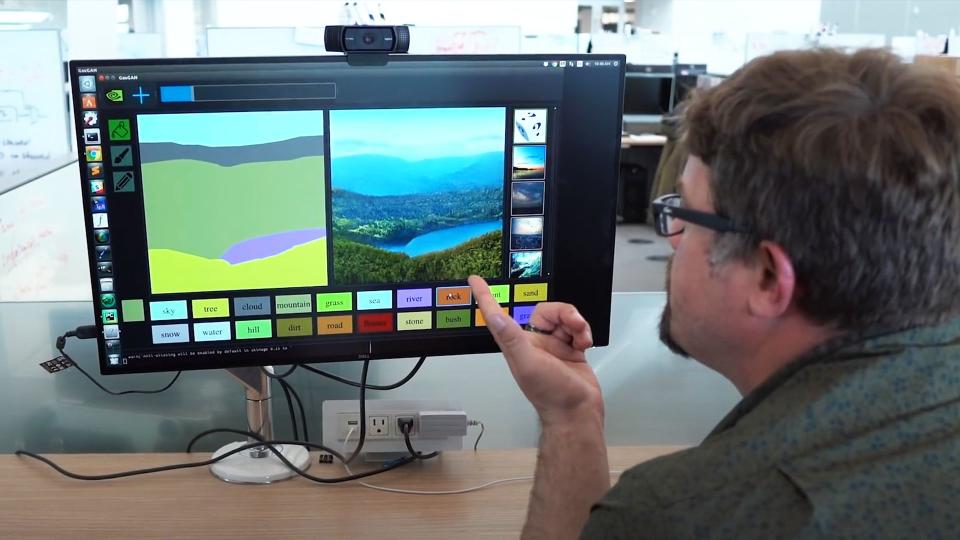Spending 20-minutes in nature could make you less stressed out

Most people welcome spending time in nature and green space. After all, taking a few moments in the outdoors offers a much-needed break from the chaos of everyday life. And it can also lend positive physiological benefits, including lower stress levels, fewer symptoms of depression, and even a lower mortality rate.
Still, despite everything scientists know about the connection between nature and well-being, they still can't say with certainty how much time outdoors leads to improved mental and physical health.
A new study, published Thursday in Frontiers in Psychology, attempted to answer that question by asking participants to spend time in a place that "brings a sense of contact with nature" for at least 10 minutes per outing, three times per week, over the course of eight weeks. The researchers found that participants who immersed themselves in a "nature experience" for at least 20 minutes per outing experienced a significant decrease in their levels of the stress hormone cortisol.
The study's authors wrote that they envision ultimately developing a "nature prescription" — or "nature pill" — that health care providers can offer to their patients as a low-cost, preventive mental health treatment. (The "pill" is the time spent outside.)
SEE ALSO: One overlooked way we can significantly improve our mental health: more nature
This research is the first step toward that goal, says MaryCarol R. Hunter, the study's lead author and an associate professor at the School for Environment and Sustainability at the University of Michigan.
That's because the subject is tricky and expensive to study. Scientists don't yet know exactly which aspects of nature and green space — whether they're trees, grass, water, or plants — trigger the benefits of being outside. It's also difficult for them to design studies using the gold standard of a randomized clinical trial because neither scientists nor study participants are supposed to know which treatment or intervention the subject receives. In a study about exposure to nature, it's typically obvious to both the scientist and their subjects who's being sent to green spaces.
So Hunter and her colleagues tried an "adaptive management" approach instead. They let their 36 participants freely decide where, when, and how long they spent time in nature, provided they obeyed certain ground rules. They couldn't use phones or internet-connected devices to browse social media or the internet, and they couldn't make calls or read during their designated time outside. Their nature experience also couldn't include aerobic exercise. The researchers were collecting saliva samples that, in addition to cortisol, measured the hormone amylase, which can be influenced by physical activity.
"They could pick any place they wanted," says Hunter, "but when they went to the place they actually had to feel some resonance to nature, feel connected to it. You could go sit next to one tree and just be with the tree, that could do it for you. The same person might go to a city park free of the noise of traffic."
Peter James, an assistant professor in the department of population medicine at Harvard Medical School who has studied the link between nature and well-being, says the study's approach highlights the trade-off of letting participants shape the intervention based on their own interests. While it makes the research more feasible, it becomes difficult to know whether they stayed outdoors longer because of a personal inclination, like because they were having a great time — or some other factor unknown to the researchers. It's also then hard to know the characteristics of the participants' nature experience.
"This is a consistent problem in the literature," says James. "What is a nature experience? Is it looking at trees, grass, going on a hike, walking in an urban park? It's one of the vexing problems in this area of research."
Hunter says that people's changing perception of nature is at the heart of this challenge. Venturing into a wilderness area might feel relaxing and restorative for one person, but terrifying for someone else, who'd much rather decompress in an urban park. Doctors who want to prescribe a nature experience to their patients shouldn't focus on a standard experience but rather encourage them to go where they feel most connected to the outdoors, Hunter says.
She also plans to release additional research based on the data collected in this study. In particular, Hunter wants to look at the self-reported information she gathered from participants about their mood, stress, and energy level to see if there's a correlation with the decrease in cortisol.
While intriguing, there are limitations to broadly generalizing the findings. The small sample consisted mainly of white women, all healthy, with a mean age of 46, who responded to an ad seeking people interested in spending more time outdoors in green spaces. That group doesn't reflect the population at large. Some research, however, does suggest that exposure to nature and green spaces has strong health benefits for low-income populations.
Hunter knows that 20 minutes in nature may be out of reach for many people. It might be difficult for them to reach green spaces or they can't commit to that much time. In her own personal experience with friends and family, Hunter has recommended just five minutes per outing to start. It's a number that seems manageable and can quickly turn into more time.
"To be practical," says Hunter, "it has to be something they can just do easily."
WATCH: Behold, the AI model that turns rough sketches to photorealistic landscapes


